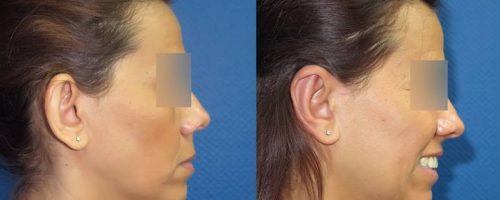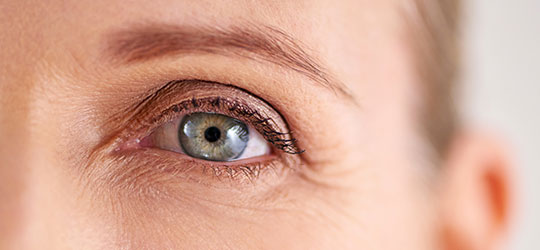Ear correction surgery corrects prominent or protruding ears. It is a simple and safe surgery that may be performed under local anesthesia. It enables patients to get rid of a common and very strong physical complex that may become a psychological distress.
- The ear is pinned back and looks natural.
- May be performed under local anesthesia.
- Fast and painless recovery.
OTOPLASTY OVERVIEW
This information sheet is issued by Dr Vincent Nguyen plastic surgeon in Paris, familiar with prominent ear surgery.
It provides all the information about the surgery, scars, recovery, before and after comparison photographs, Social Security coverage and the costs of otoplasty surgery.
What is a prominent ear?
 A prominent ear is a group of ear deformities increasing prominence of the external ear. It results in 3 types of defects (see pictures):
A prominent ear is a group of ear deformities increasing prominence of the external ear. It results in 3 types of defects (see pictures):
- An excessively wide angle between the skull and the auricle of the ear that projects the ear forward (Helix Valgus).
- Hypertrophy of the cartilage (concha excess): the cartilage at the back of the ear forces it to stick out from the head (Hypertrophy of the Concha).
- Underdeveloped antihelical folds. The shape of the cartilage, when the crease of the pavilion is not sufficiently marked, makes the ear appear too smooth (Antihelix defect).
Otoplasty is often performed on children to spare them ridicule, teasing or even bullying at school that may lead to psychological distress and poor academic performance.
What are the causes to prominent ears?
In most cases it is due to an isolated congenital anomaly. In rare cases it can be part of a more consequential birth facial defect syndrome or it may result from an injury.
PRINCIPLES OF OTOPLASTY
What’s the goal of prominent ear correction?
The goal of prominent ear surgery is to improve the esthetic appearance of the ear by shaping the skin and cartilage behind the ear so that it looks less protruding. It gives the ear a natural shape with normal projection.
Otoplasty is usually performed on both ears but it is possible to have surgery on just one ear.
DESCRIPTION DES ÉTAPES D’INTERVENTIONS DES OREILLES DÉCOLLÉES
BEFORE EAR CORRECTION SURGERY:
- Two preoperative consultations with a board-certified plastic surgeon will be conducted as well as a consultation with an anesthetist if the procedure is performed under general anesthesia.
- Before and after comparison photographs will be taken.
- A compression stretch wrap (sports style headband) will be prescribed.
- Preoperative instructions are as follow:
- Quit smoking at least one month before the surgery and up to 2 weeks after the surgery to reduce the risks of complications.
- Discontinue any anti-platelet or blood-thinning medication 15 days before the surgery.
OTOPLASTY SURGERY:
- Type of anesthesia: 3 procedures are possible:
- Pure local anesthesia: the ears are numbed.
- Local anesthesia extended with tranquilizers administered intravenously (“vigilant” anesthesia).
- Classic common general anesthesia.
- The procedure lasts 1 to 1 and a half hour depending on the surgery.
- Dr Vincent Nguyen uses the latest surgery techniques thus avoiding drain tubes, and performs the surgery on both ears himself.
You can see almost immediate results when the first dressing is removed but a period of 2 months is necessary to assess the final result.
AFTER EAR SURGERY:
- Otoplasty is a painless surgery and only light analgesics will be prescribed.
- As it is an outpatient procedure, patients are discharged the same day.
- Swelling and bruising appear around the ears the following days. The absence of relief is due to edema and is transitory.
- No nursing care is required.
- You may shower the following day.
- All sutures are resorbable.
- Wear the compression headband over the ears night and day the first week and then for a month while sleeping.
- Depending on the nature of their job, the patients may go back to work 5 to 10 days after the surgery.
- You can resume contact sports after one month.
- Follow-up consultations will be planned with Dr Vincent Nguyen (1 week, 3 months, 6 months and 1 year after the surgery).
OTOPLASTY: PRICE AND COSTS
- Part of the cost of ear surgery may be covered by Social Security or Health Insurance Company to correct an ear deformity or a congenital defect if it has a psychological impact (especially on a child).
- There is no coverage by your Health Insurance Company if it is done for esthetic reasons only.
- Otoplasty surgery costs may vary depending on the defect to correct, the extent of the surgery, the length of the procedure, the type of anesthesia, the location of the procedure and whether or not it is covered by your Health Insurance Company. The cost of otoplasty may vary from … to … (see all the costs of the procedures on this website).
- The success of your surgery depends on a board-certified and competent plastic surgeon who will evaluate and discuss your needs and your options and recommend a course of treatment to achieve the best natural results.
OTOPLASTY FAQs:
When to get otoplasty?
Otoplasty can be done at any age from 7 to adulthood but it’s more common during childhood, as soon as the child is ready.
Are there visible scars?

The scar is hidden behind the ear (see picture).
Quelles sont les alternatives à l’otoplastie chirurgicale ?
Il est possible de mettre en place des implants définitifs pour recoller les oreilles. Ce procédé se pratique au cabinet médical, sous anesthésie locale, évitant ainsi la contrainte du bloc opératoire et les suites d’une otoplastie. Ce procédé révolutionnaire se nomme Earfold, vous trouverez toutes les informations ici.






